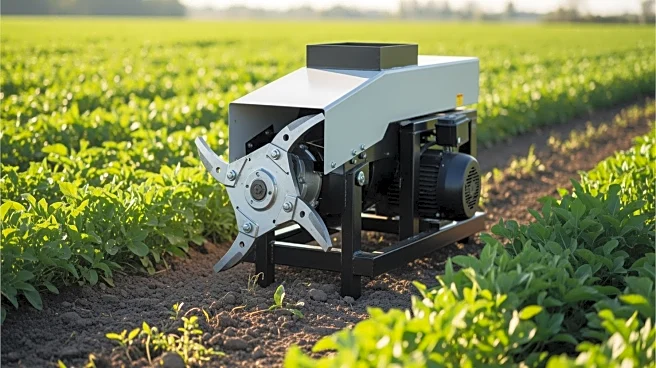What's Happening?
Herbicide carryover, a condition where herbicides persist in the soil longer than intended, poses a significant risk to subsequent crops. This issue is particularly prevalent following late-planted crops, as the shift in the growing season can lead to herbicide applications
occurring later than usual. Experts like Wesley Everman from Iowa State University emphasize the importance of understanding the breakdown process of herbicides, which is largely dependent on microbial activity. Factors such as soil moisture, temperature, and organic matter content can influence this process. Farmers are advised to adhere strictly to herbicide labels to avoid crop injury, which can manifest in various symptoms depending on the herbicide used.
Why It's Important?
The persistence of herbicides in the soil can have detrimental effects on crop yield and health, impacting the agricultural sector significantly. Farmers who do not manage herbicide carryover effectively may face reduced crop vigor and yield, exacerbating other agricultural challenges. This issue underscores the need for careful planning and adherence to guidelines to ensure sustainable farming practices. The economic implications are substantial, as crop damage can lead to financial losses for farmers and affect the broader agricultural supply chain.
What's Next?
Farmers are encouraged to conduct soil tests to assess herbicide levels and consider crop rotation strategies that minimize the risk of carryover. As the agricultural community continues to face challenges from climate variability and changing planting schedules, ongoing education and adaptation will be crucial. The development of more resilient crop varieties and improved herbicide formulations may also play a role in mitigating these risks in the future.
Beyond the Headlines
The issue of herbicide carryover also raises environmental concerns, as persistent chemicals in the soil can affect biodiversity and soil health. This highlights the need for integrated pest management strategies that balance effective weed control with environmental stewardship. The agricultural industry may need to explore alternative weed control methods, such as mechanical weeding or the use of cover crops, to reduce reliance on chemical herbicides.














